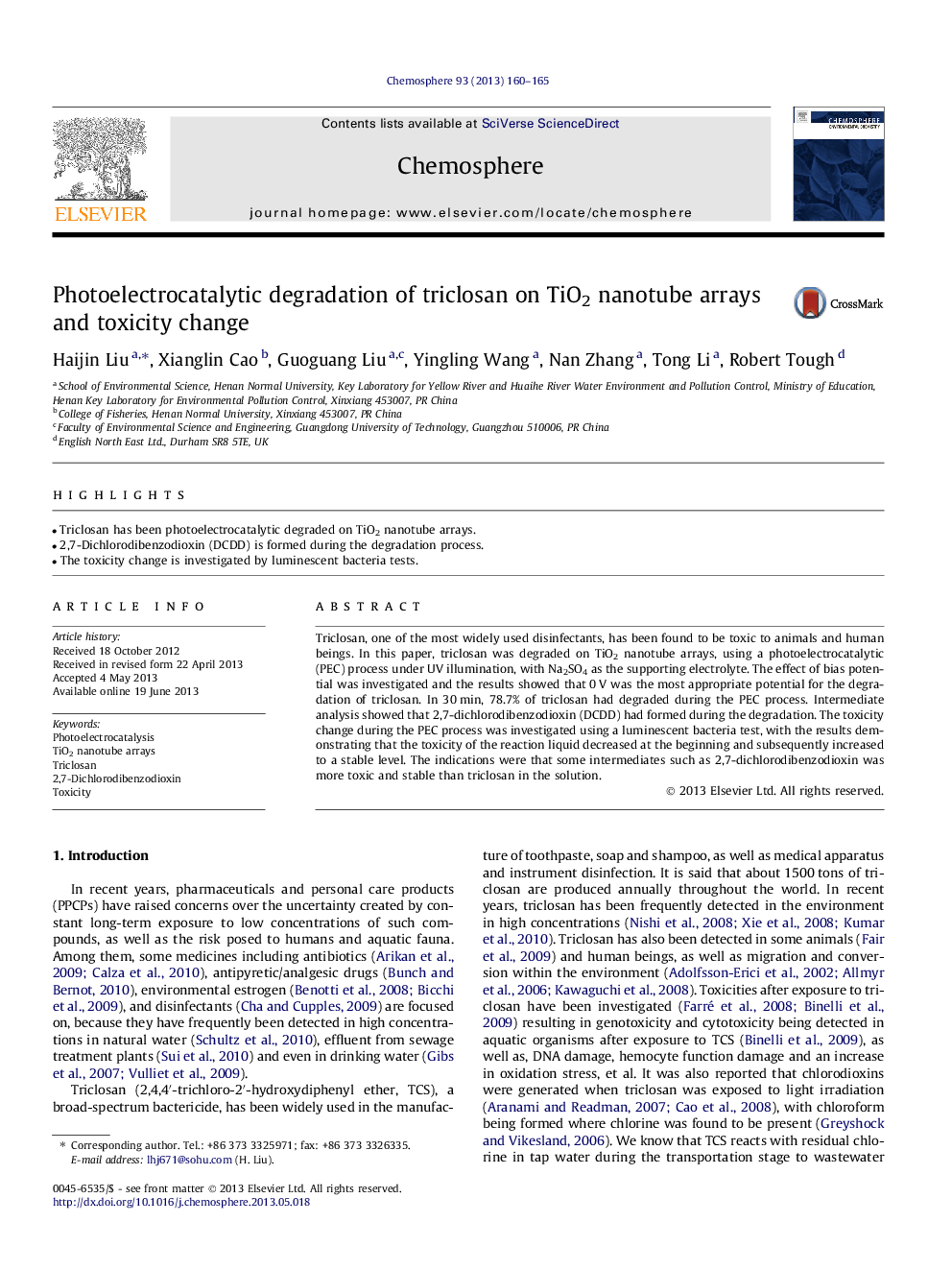| کد مقاله | کد نشریه | سال انتشار | مقاله انگلیسی | نسخه تمام متن |
|---|---|---|---|---|
| 4409025 | 1307457 | 2013 | 6 صفحه PDF | دانلود رایگان |

• Triclosan has been photoelectrocatalytic degraded on TiO2 nanotube arrays.
• 2,7-Dichlorodibenzodioxin (DCDD) is formed during the degradation process.
• The toxicity change is investigated by luminescent bacteria tests.
Triclosan, one of the most widely used disinfectants, has been found to be toxic to animals and human beings. In this paper, triclosan was degraded on TiO2 nanotube arrays, using a photoelectrocatalytic (PEC) process under UV illumination, with Na2SO4 as the supporting electrolyte. The effect of bias potential was investigated and the results showed that 0 V was the most appropriate potential for the degradation of triclosan. In 30 min, 78.7% of triclosan had degraded during the PEC process. Intermediate analysis showed that 2,7-dichlorodibenzodioxin (DCDD) had formed during the degradation. The toxicity change during the PEC process was investigated using a luminescent bacteria test, with the results demonstrating that the toxicity of the reaction liquid decreased at the beginning and subsequently increased to a stable level. The indications were that some intermediates such as 2,7-dichlorodibenzodioxin was more toxic and stable than triclosan in the solution.
Journal: Chemosphere - Volume 93, Issue 1, September 2013, Pages 160–165